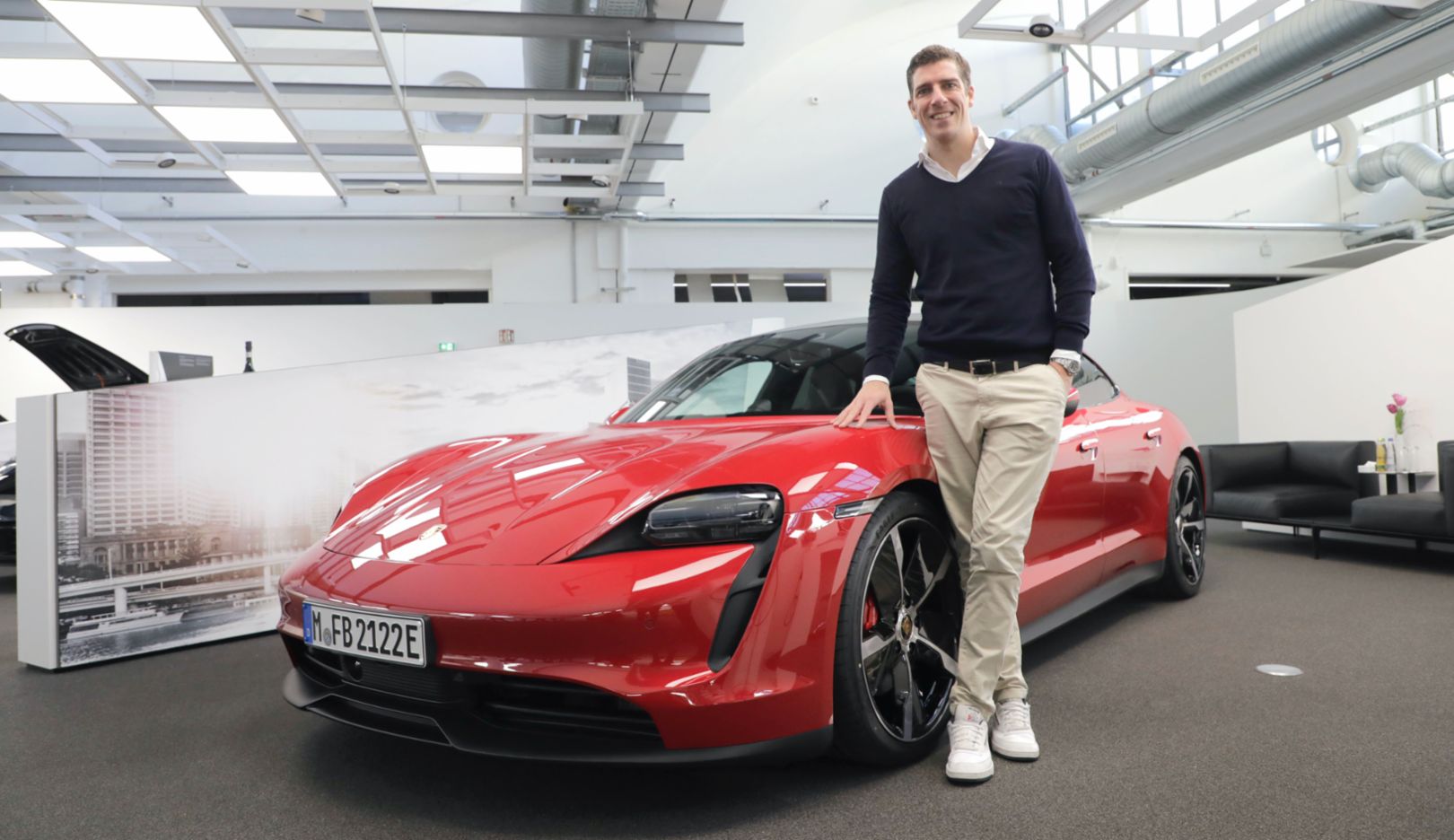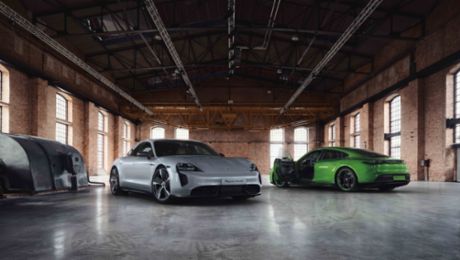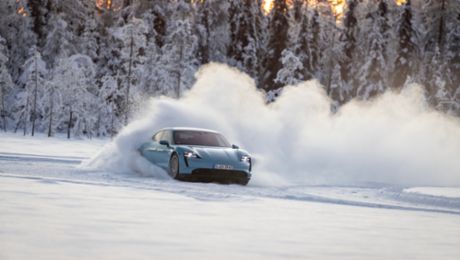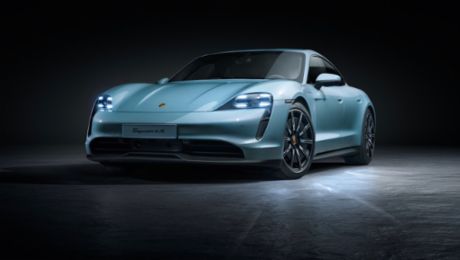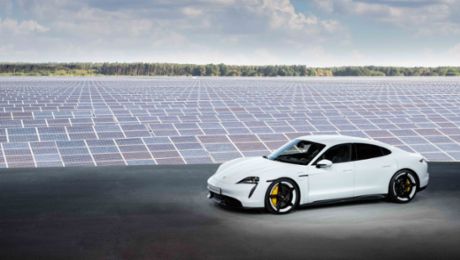There is a lot going on this morning at the gate of “Werk 1” in Zuffenhausen. Employees show their ID as they pass through factory security. Florian Böhme is also on his way and is expected. It is a very special day for him. Not only is it his 43rd birthday, but he is also picking up a Taycan 4S in Carmine Red – the very first customer to collect the new electric sports car from the parent factory.
“Wow, that looks fantastic! The colour looks even better than in the pictures,” exclaims Böhme, as he stands in front of the fully electric Porsche in the delivery hall. He has travelled with his wife and his mother. Celebrating the first encounter with their own Porsche is the highlight of their day.
Ottomar Domnick must have had a similar experience. The doctor and arts patron picked up his 356 in Zuffenhausen almost 70 years ago, on 26 May 1950. Domnick was the first person in Porsche history to pick up a car from the factory. Back then and up to the 70s, the handover still took place outside.
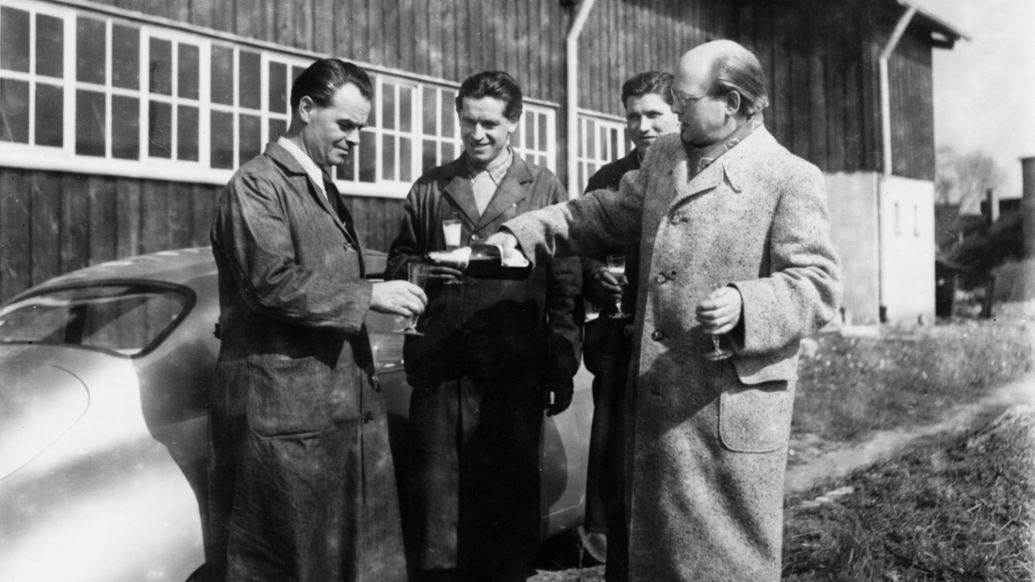
“Picking up the car from the factory makes Porsche personal,” explains Alexander Fabig, Head of Personalisation & Classic. “It is a very emotional experience for many customers to pick up their new car where it was built.” Customers picking up their cars are also offered an extensive range of activities. This includes a tour of the factory, lunch and a visit to the Porsche Museum, for example. The numbers speak for themselves – in 2019, 2,500 customers picked up their cars from the factory in Zuffenhausen, up to 20 cars a day. Since 2002, Porsche Leipzig has also offered the opportunity for collection from the factory. Approximately 3,000 cars are handed over there annually.
Handover of the car remains the highlight of the day – whether in 1950 or 2020. Porsche’s customer advisors take a lot of time for this. They explain the different car functions, help to find the optimum seat setting or to set up Connect services.
New target group for the Taycan
New aspects have been added for the Taycan. How do I charge the car? How does the Range Manager work, which helps to plan the optimum travel route? Fabig: “Our customer advisors have been extensively trained in the new drive technology and functions of the Taycan.” A number of charging points have also been installed in the delivery hall, which can be used to demonstrate and explain the charging procedure. “Otherwise, the customer experience and the process for picking up a car from the factory remain pretty much the same,” says Fabig.
It is a special day for the Böhme family – and for the factory delivery team. Because the first Taycan collection from the parent factory represents a new chapter in many ways. With the purely electric powertrain, Porsche is addressing a new target group, including people like Böhme. “When I first saw the Taycan in the press, I just knew I had to have it,” he explains. Born in Stuttgart, he now works for an Internet company in Munich. As a director he is responsible for the business customer division. Environmentally-friendly mobility is absolutely imperative to him: “I have children. It is important for me to reduce emissions for the sake of their future.”
And suddenly, the moment arrives when a dream becomes reality. Whether in 1950 or 2020, whether in Leipzig or in Stuttgart: Driving away from the factory in a new car is electrifying in any Porsche. Especially in the Taycan!
